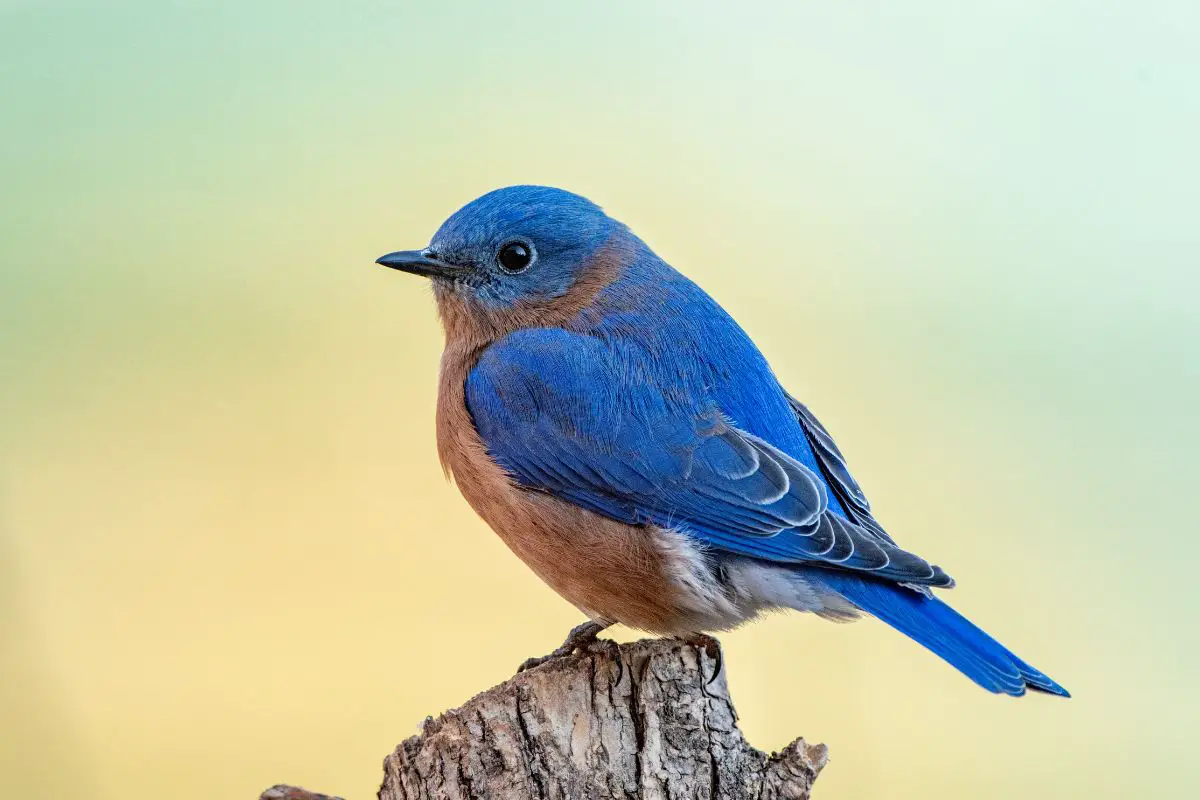
When you think of the bluebird, you think of an average-sized bird in the brightest shades of blue with an orange chest sitting on your feeders, flying through the sky or nesting in a tree nearby. These birds have a lifespan of anywhere from 6 to 10 years, so you can enjoy them for several years through the spring and summer months. Like most birds, the male bluebird will have the most attractive colors, in areas where there is a lot of grass and vegetation.
These birds have a preferred omnivore diet but will dine on certain vegetation and seeds if there are no worms to be had. While it may seem like bluebirds are very popular, there are some other birds similar to bluebirds in their size, color, and other features. No matter where you are in the country, there are numerous other birds that are blue and have vast differences from the bluebird.
1. Blue Jays
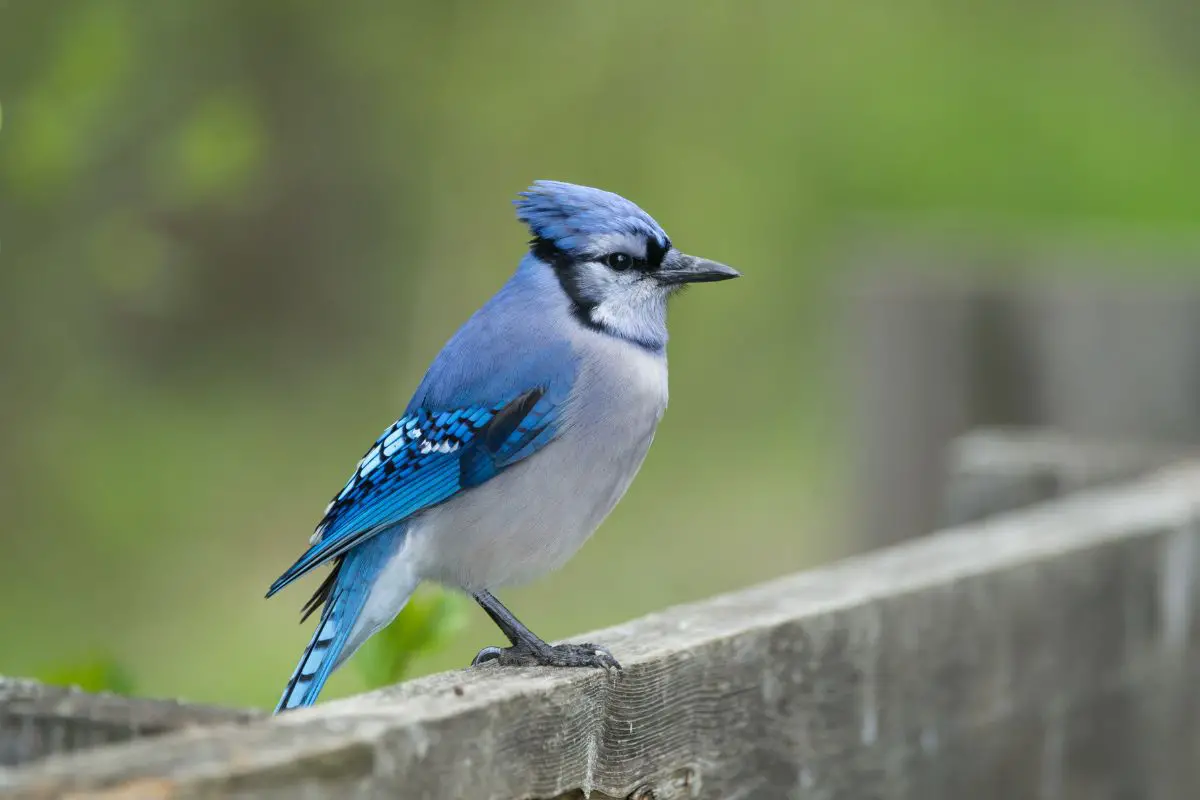
If you think you are looking at a large bluebird, look again because it may just be a blue jay. They are about a third longer than bluebirds. While they both are similar in their blue color, the color patterns are different with bluebirds having a blue and orange pattern and the blue jay has a hint of purple, gray, and blue pattern.
Both of these birds prefer to be vocal, but if you listen closely, you can hear the difference. With the bluebird, you’ll hear a low-pitched signing while the blue jay will make clicks, whirrs, and movement sounds. The lifespan on the blue jay is similar to the bluebird, lasting between five and seven years on average.
2. Indigo Bunting
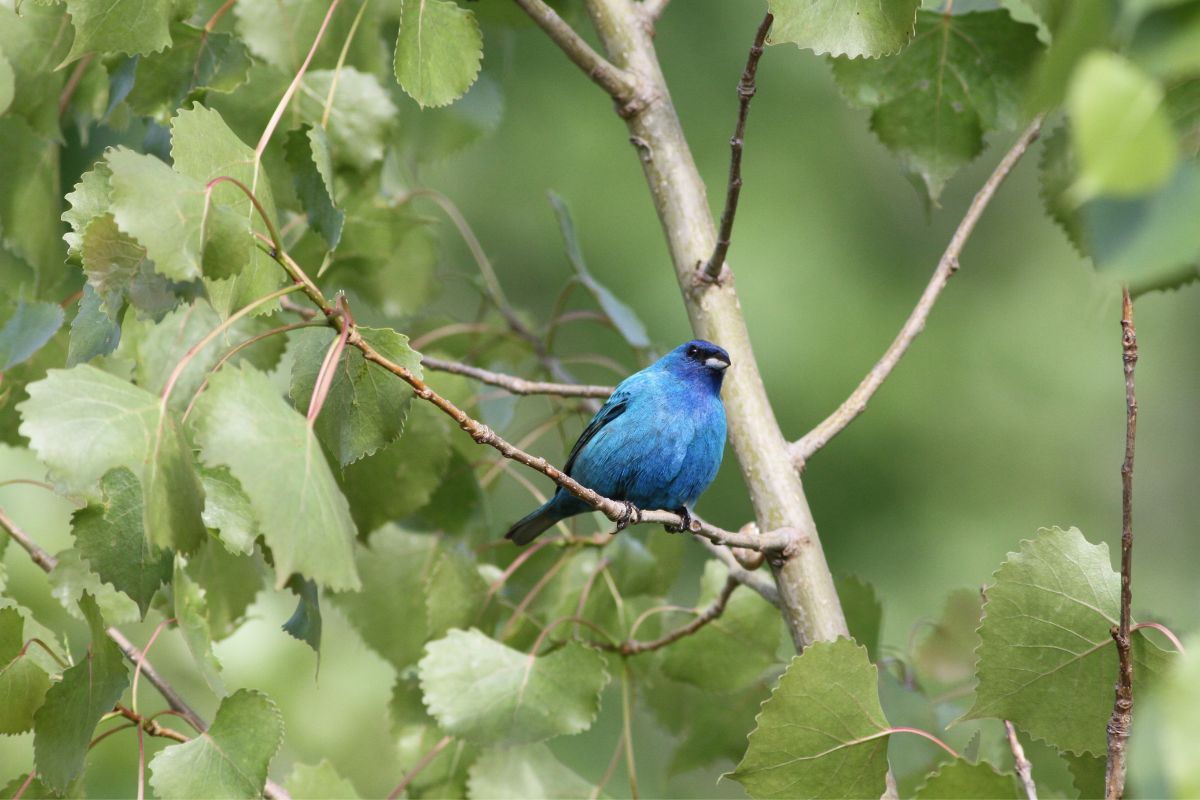
Similar in size and color, it is easy to mistake an indigo bunting for a bluebird if you do not look carefully enough. While these birds are both found in the eastern part of the country, they do have some differences. The bluebird does have a blue contrast with the orange while the indigo bunting is solid blue all over.
Because they have different beaks, the bluebird is more equipped to dig and dine for worms while the indigo bunting is enjoying seeds for their digestion. While both the male and female bluebirds have some variant of blue feathers, the indigo bunting female shares no blue colors at all.
3. Lazuli Bunting
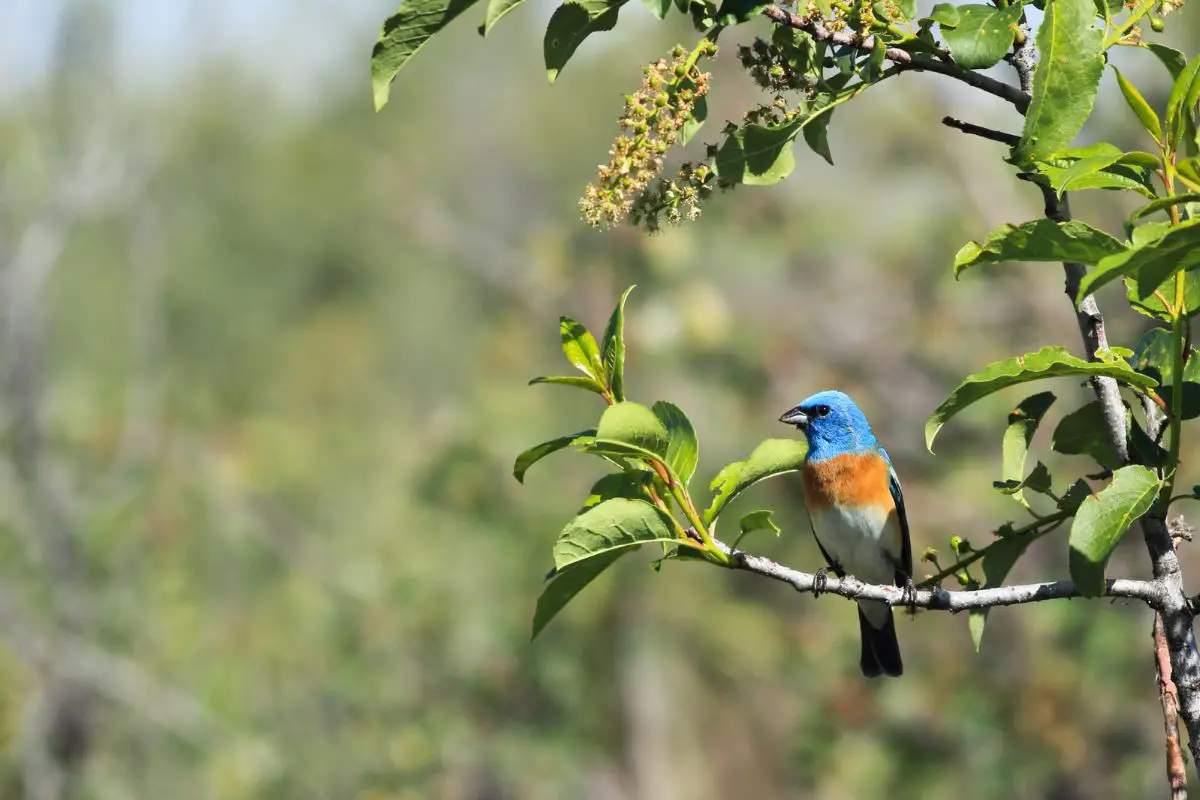
Found on the western border, the lazuli bunting is another bird in blue that is similar to the bluebird. Ont he west coast there are western bluebirds that are similar in size to the lazuli buntings. Both incorporate blue and orange on their male birds.
However, there is still blue and orange on the female bluebird while the female blue jay is covered in neutral and earthy tones that are not as attractive. Just like the east coast, the lazuli bunting is more of a herbivore and the western bluebird an omnivore, thanks to the differences in their beaks. This is another way to determine which bird is which, as the lazuli bunting has a large beak made for seeds, and the small beak of a western bluebird is designed for worms and insects.
4. Barn Swallow
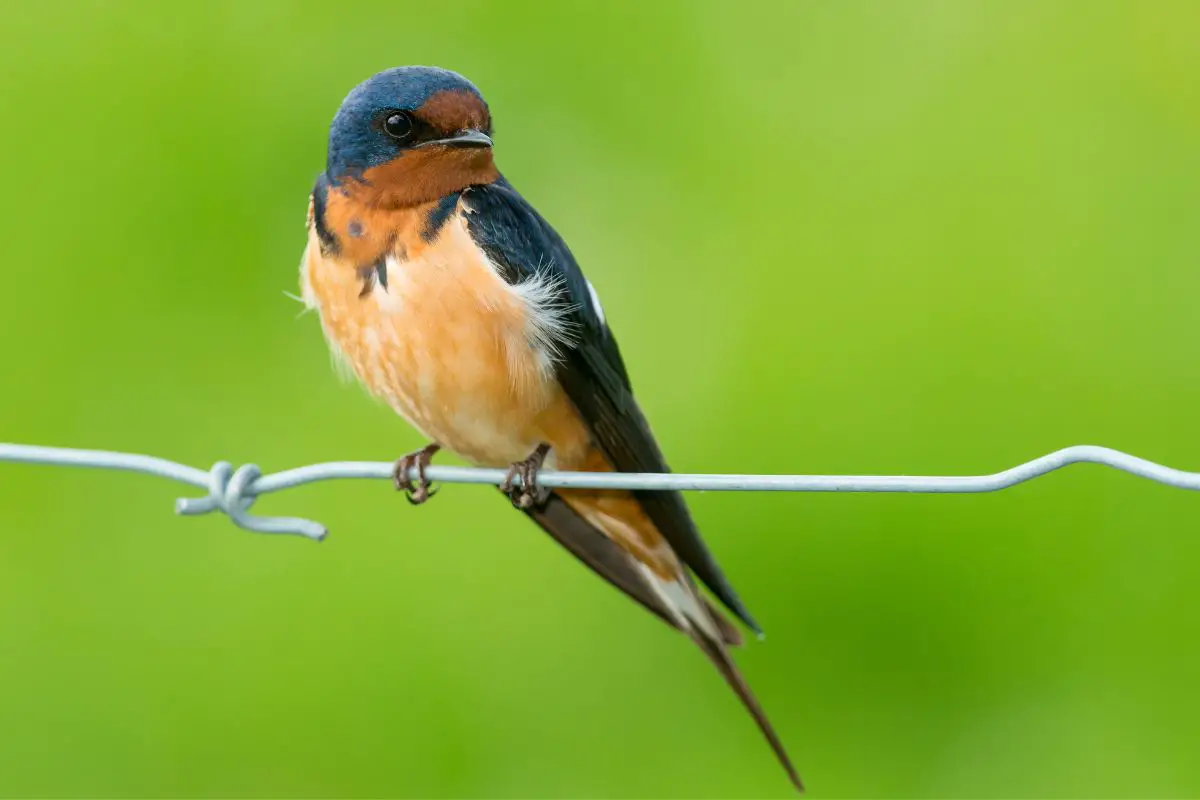
Another bird similar to the bluebird is the barn swallow. This bird is often confused with the bluebird, as it is similar in color and size. When bluebird boxes are put out in yards and farms, barn swallows may take up residence where the bluebird was meant to be.
The barn swallow is similar to the bluebird in its nesting habits, as both are cavity nesters. They are often found in the same location and could be competing for birdhouses that have been placed. The barn swallow is a fast flier, usually flying by quickly and even ducking low during their travels.
The barn swallow has a longer tail than the bluebird, and it is forked, making it a way to identify it as a barn swallow.
5. Blue Grosbeak
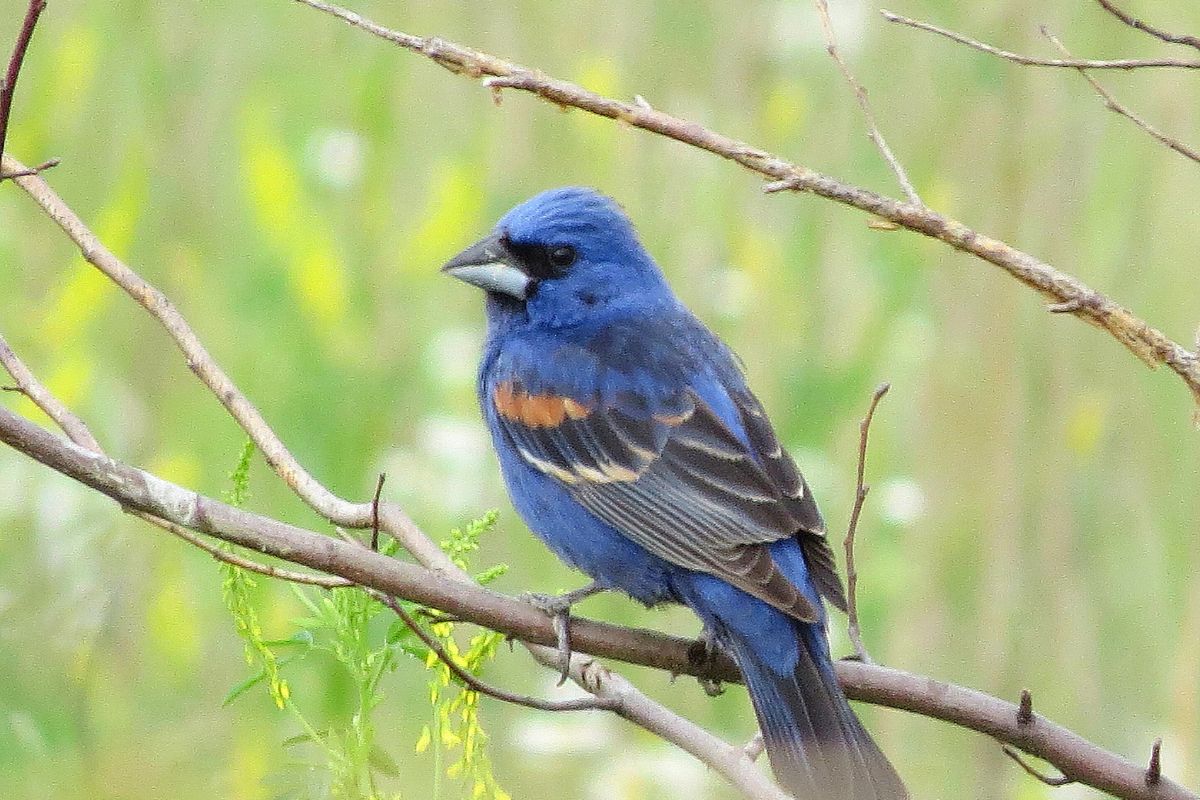
Larger than the bluebird, the blue grosbeak is one that is often confused for a bluebird until it comes alongside a bluebird. Both the bluebird and the blue grosbeak are found in the eastern portion of the country, especially during the blue grosbeak mating season. However, the blue grosbeak prefers the warmest of temperatures, and many reside primarily in the bottom portion of North America and Central America.
You will find blue and orange on both of these birds, but a closer look will reveal a darker blue shade on the blue grosbeak. When you look at the face of the blue grosbeak, you will notice a black mask around the eyes, giving away which bird they really are.
6. Florida Scrub-Jay
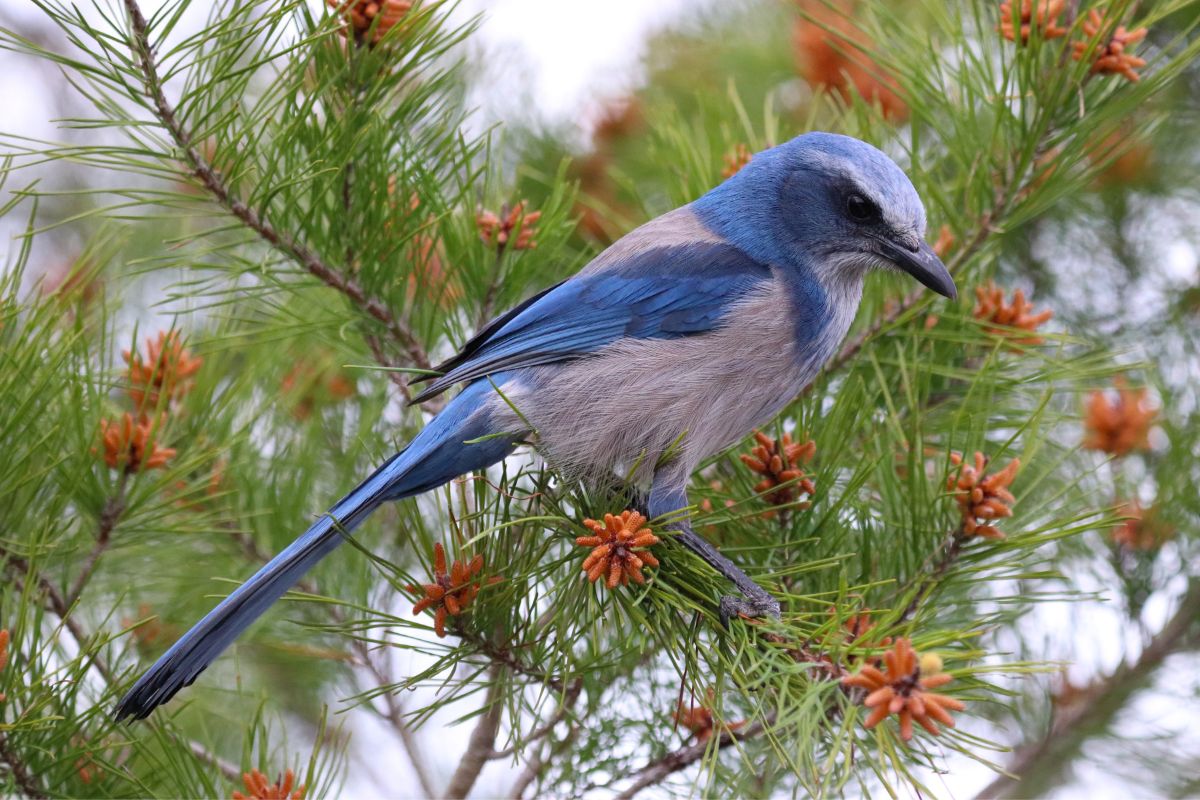
The Florida scrub-jay is another bird similar to the bluebird. The Florida scrub-jay is similar in size, and when the two birds are flying, they can be hard to distinguish. However, a quick landing will allow you to notice that the scrub-jay actually has a lighter shade of blue, and it is blended with a white and gray pattern.
Like the bluebird, the scrub-jay enjoys a diet of insects and worms. It is large enough to enjoy small amphibians like toads and frogs. The only place you will find Florida scrub jays and bluebirds together is in Florida.
The atmosphere and trees that are native to Florida are also essential to the habitat of the scrub jay. This is different from the bluebird that lives all over the east coast.
7. Cerulean Warbler
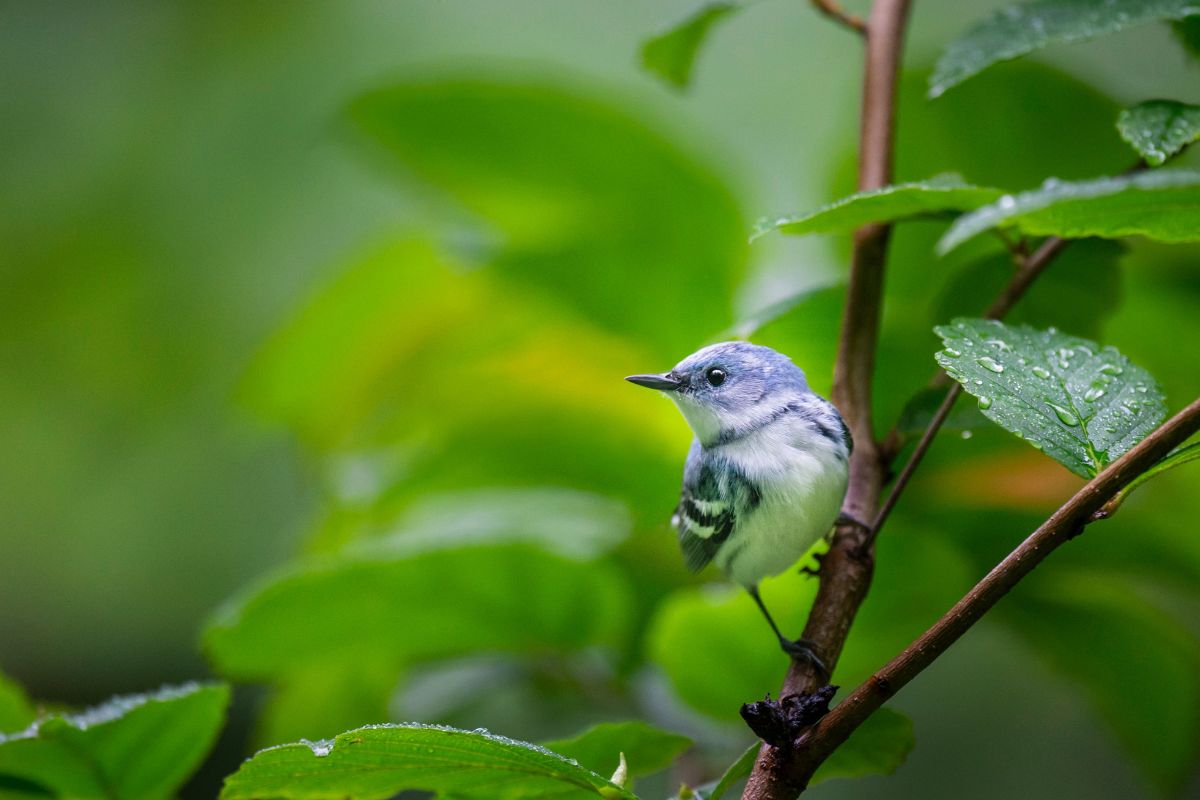
Like the bluebird, the cerulean warbler males and females both have blue on them. The females, of course, are not as bright and attractive as the males. If you have watched the female cerulean warbler decide to go on forage from the nest, take a look at the uniqueness of her leaving.
She will fall from the nest until she is below it and then start flying away to her destination. This is an indicator that you have a nest of cerulean warblers on your property. They are found primarily in the eastern part of the country like the bluebird, with their breeding ground being more in the middle, and migrating to the coastal states in the winter months.
Like the bluebird, they have a nice, upbeat song that lets you know they are nearby. Since they nest way up high, they are found in the tops of trees and you see them when they are flying away.
8. Purple Martin
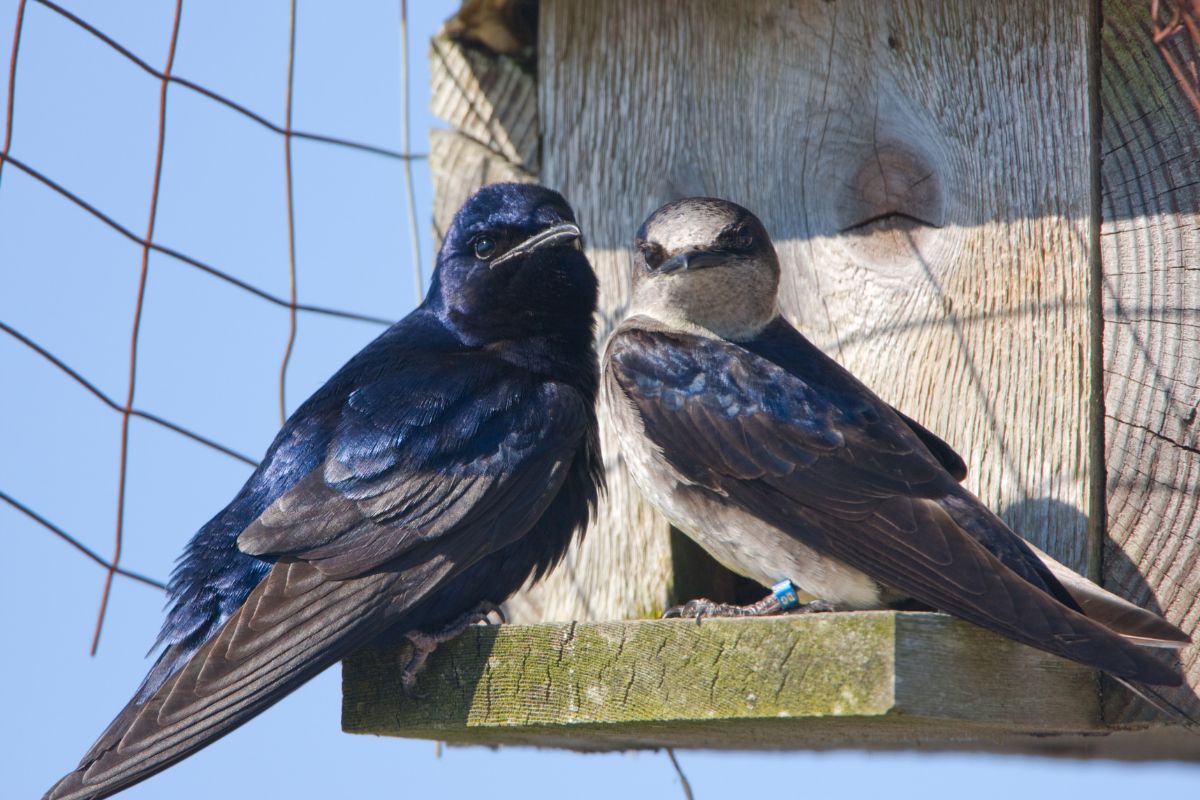
When you see a purple martin, you see a purple shade that is beautifully blended and darker than a bluebird. In the sunlight, however, they do look similar. The female purple martins are not purple at all, taking on brown and gray tones that are less attractive than their male counterparts.
Compared to the bluebirds, their tails are forked, and their wings are tapered. They live primarily on the eastern coast of the Midwest, where the temperatures are mild, and they stay in these areas primarily all the time. These birds are expert fliers, as they travel several hundred feet into the air looking for prey and have their own songs when they are nearby.
9. Steller’s Jay
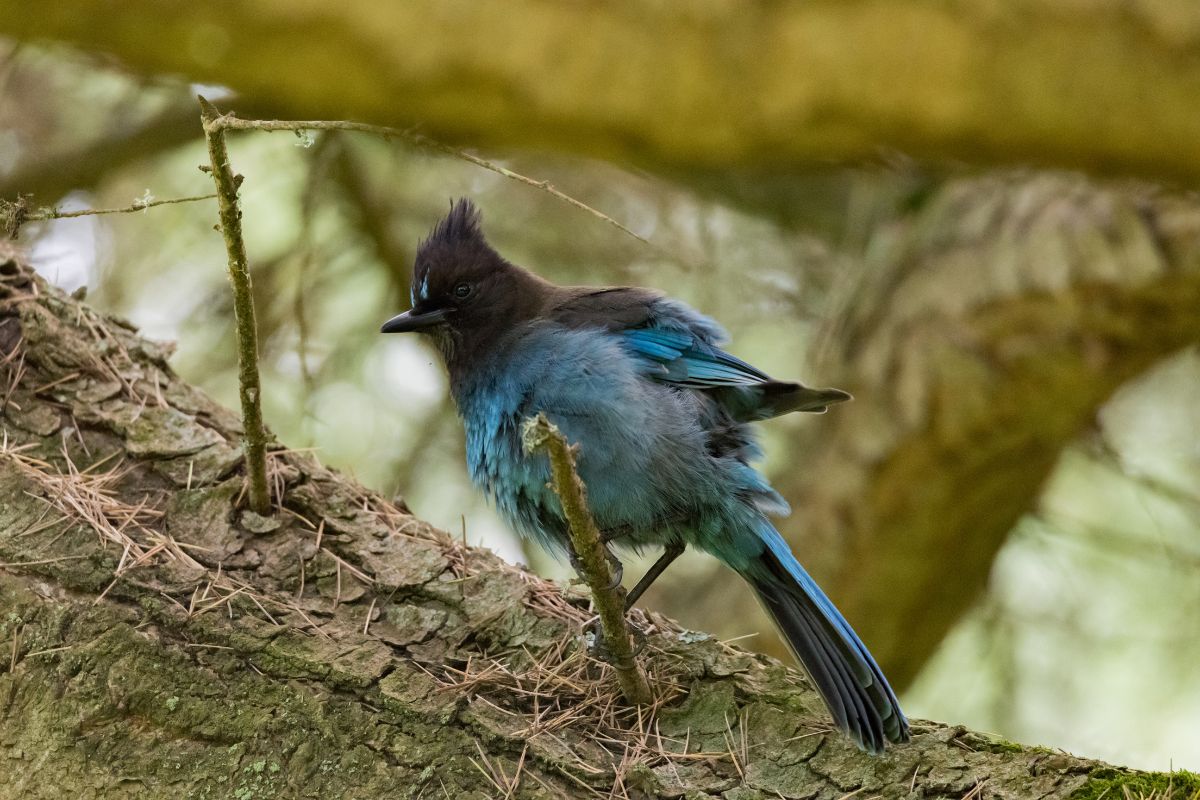
The beautiful stellar’s jay is similar to a bluebird, but they have a significant difference in appearance. While they share the royal blue feathers, the steller’s jay’s head is black and blends into the blue coat. The stellar’s jay is larger than the bluebird, almost doubling it in size.
They live only in the western part of the country, and even up into Canada. These birds prefer the comfort and security of evergreen trees found in these deep forests along the coast. They have a taste for nuts, which is different from the bluebird, so if you add those to seeds in your bird feeders, you could have them coming to visit you in no time at all.
10. Pinyon Jay
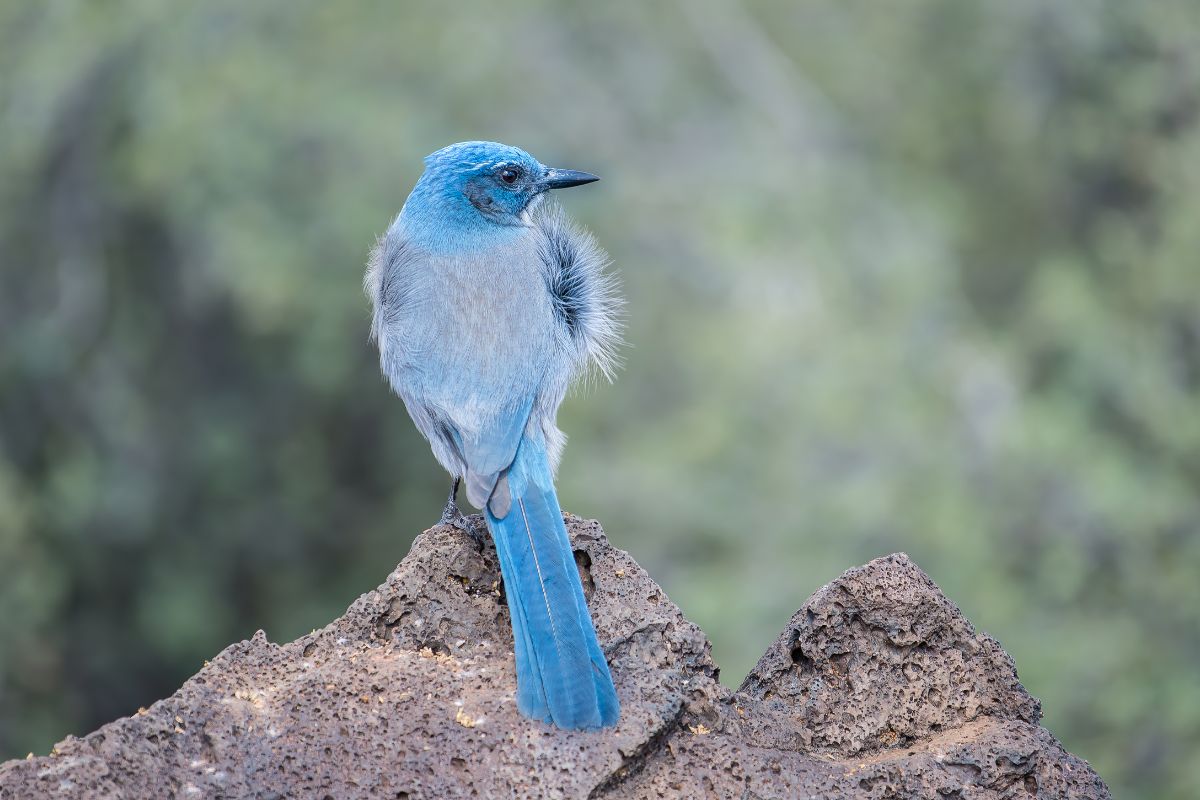
A blue bird with all shades of blue is the pinyon jay bird. It is similar in size to the bluebird and they both enjoy making their presence known with song. In fact, the pinyon jay may be the only bird on the list that has more sound and noise than the bluebird.
Like the bluebird, all of them share some shade of blue, leaving the females with the lighter shades. In some areas, the pinyon jay is considered a blue crow because of its calls. Their sound is similar to a crow, but they can make other sounds that let you know they are nearby.
They spend their lives in one the western part of the country among sagebrush, and pinyon-juniper forests, which provides their name. They do not migrate during the year, which is different from the bluebird, so they spend the year foraging and enjoying nuts, seeds, and berries found native to the area.
11. Western Scrub-Jay
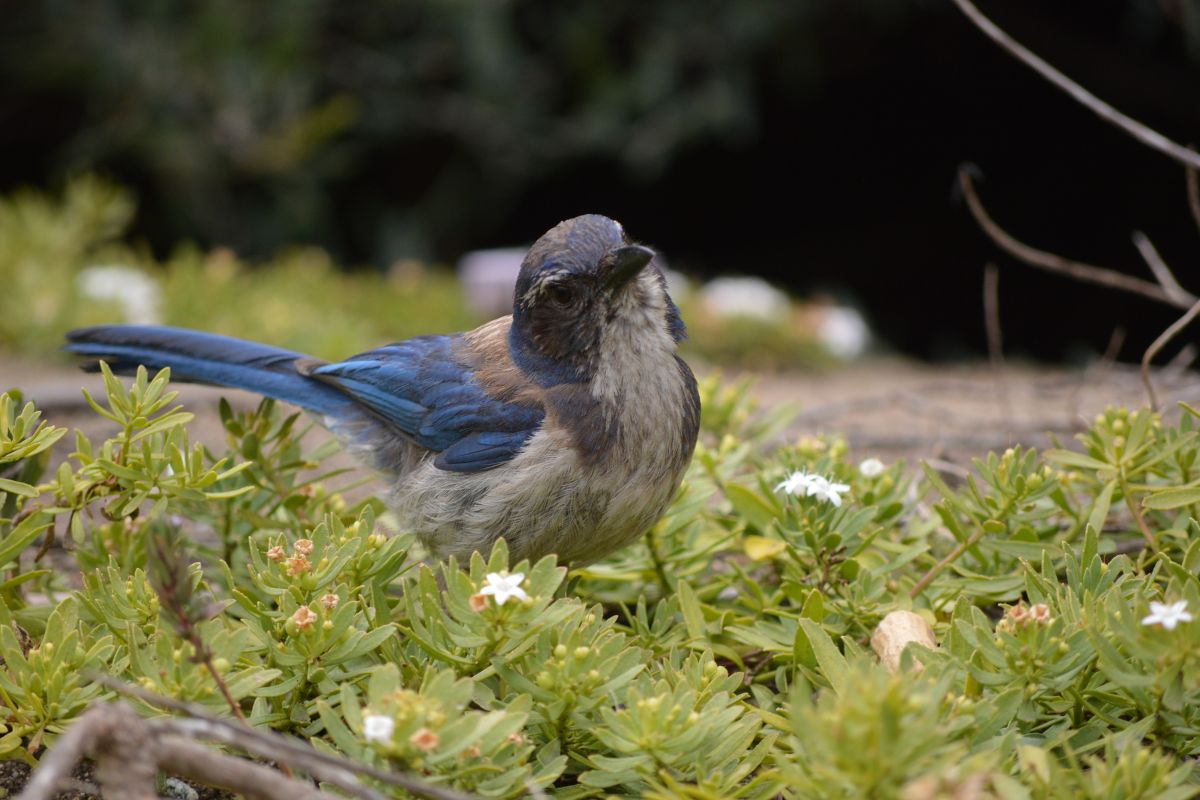
Found located on the western coast of California is the western scrub-jay. Like the bluebird, it is small, and they are similar in size. The markings on the western scrub jay are unique to other birds on this list.
The wing, tails, and heads are all blue. Their throat has a white outline with a necklace of blue feathers wrapping around it. Once you see the necklace, you know it is a western scrub-jay.
The bill on this bird is small like the bluebird, and they have a similar diet to the bluebird. The western scrub jay and the bluebird enjoy insects and berries, but the western scrub jay goes a bit farther with eggs from other birds, lizards, and small toads.
12. Black-throated Blue Warbler

Unlike the bluebird, the black-throated blue warbler has bright and colorful males in the species but females carry dull colors, such as green and gray tone that is not as bright or attractive. All of them, no matter their sex will have a white patch on their wings, which identifies them from other birds. In the winter months, the black-throated blue warbler is located in the Caribbean islands and then returns to the eastern shore during the warmer months.
They have a diverse diet, eating everything from worms to twigs that have made a home on the forest floor. The males can be aggressive, even to bluebirds whom they share a habitat with throughout much of the year.
13. Belted Kingfisher
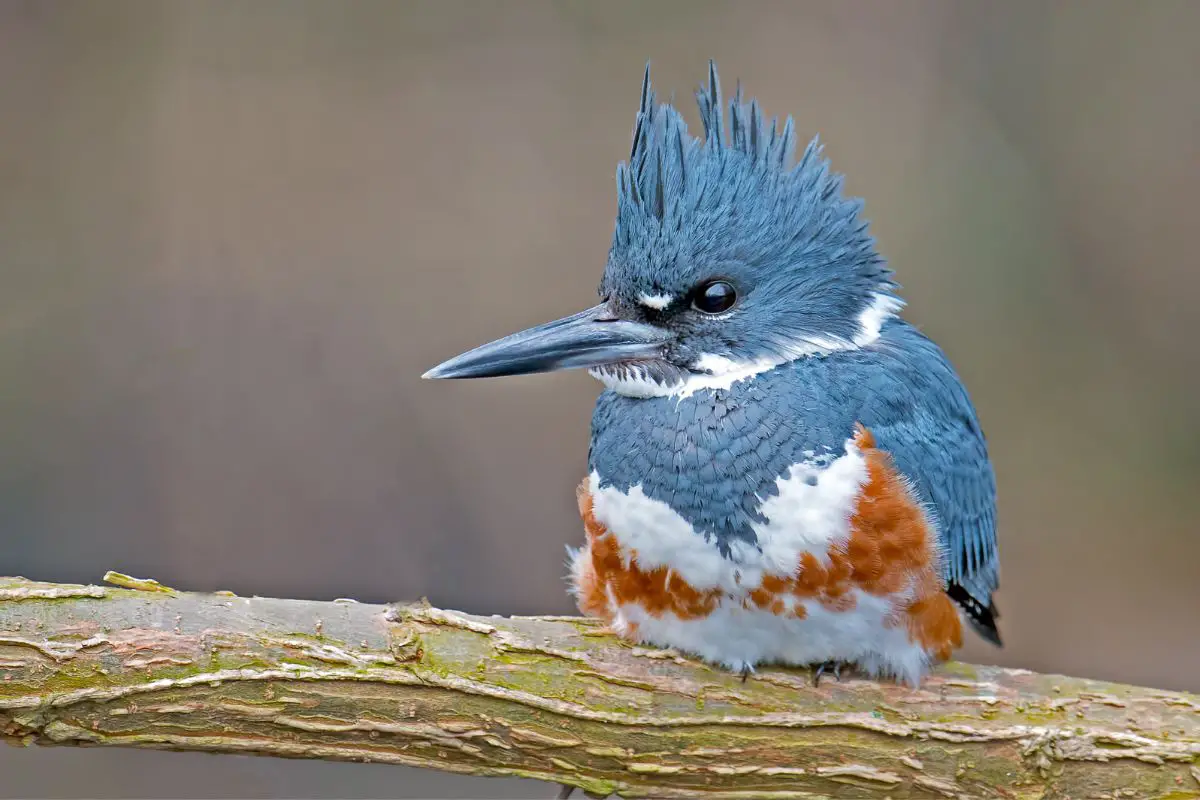
Similar to the bluebird, the belted kingfisher has blue on both sexes. What is different about them, however, is that the females are actually brighter. This isn’t just different from bluebirds, this is rare for birds in general.
The color pattern is a blue-gray shade blended with white on these birds and they are similar to the bluebird size. Another unique fact about the belted kingfisher is the fact that it is always looking for a habitat near water. They have a preferred diet of small fish, insects, worms, and lizards when they are readily available.
The bluebirds are also omnivores but are consuming much smaller prey.
14. Painted Bunting
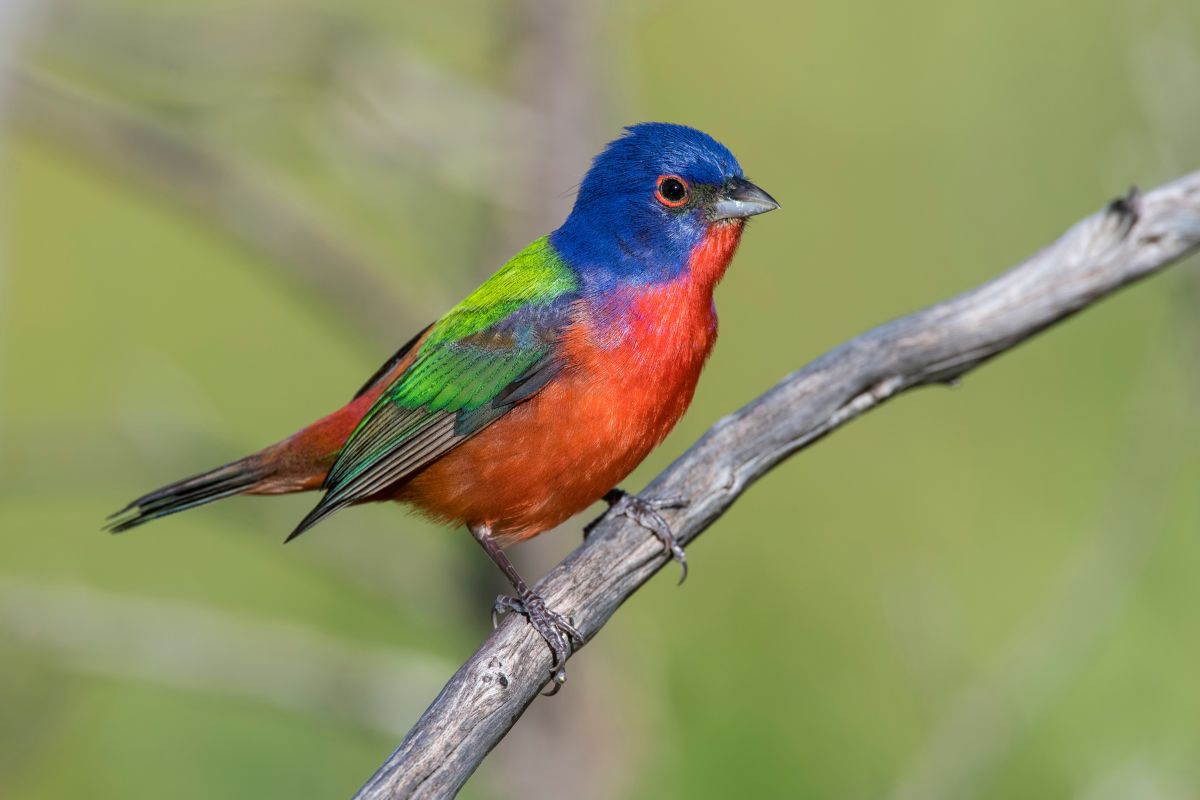
Another bunting species, this bird has some blue features and shares some similarities with the bluebird. They are similar in size, being a bit thicker than some other birds, and enjoy insects as a part of their diet. There are some differences, however.
While they share the same shade as blue with the bluebird, the painted bunting only has blue on its head, with the rest of its body covered in various colors. The females do not have any blue at all and are primarily green and white. These birds fly sound for the winter, down to Florida and parts of the Caribbean.
When it warms back up, however, they are calling the southeastern region home, especially during breeding season.
15. Tree Swallow
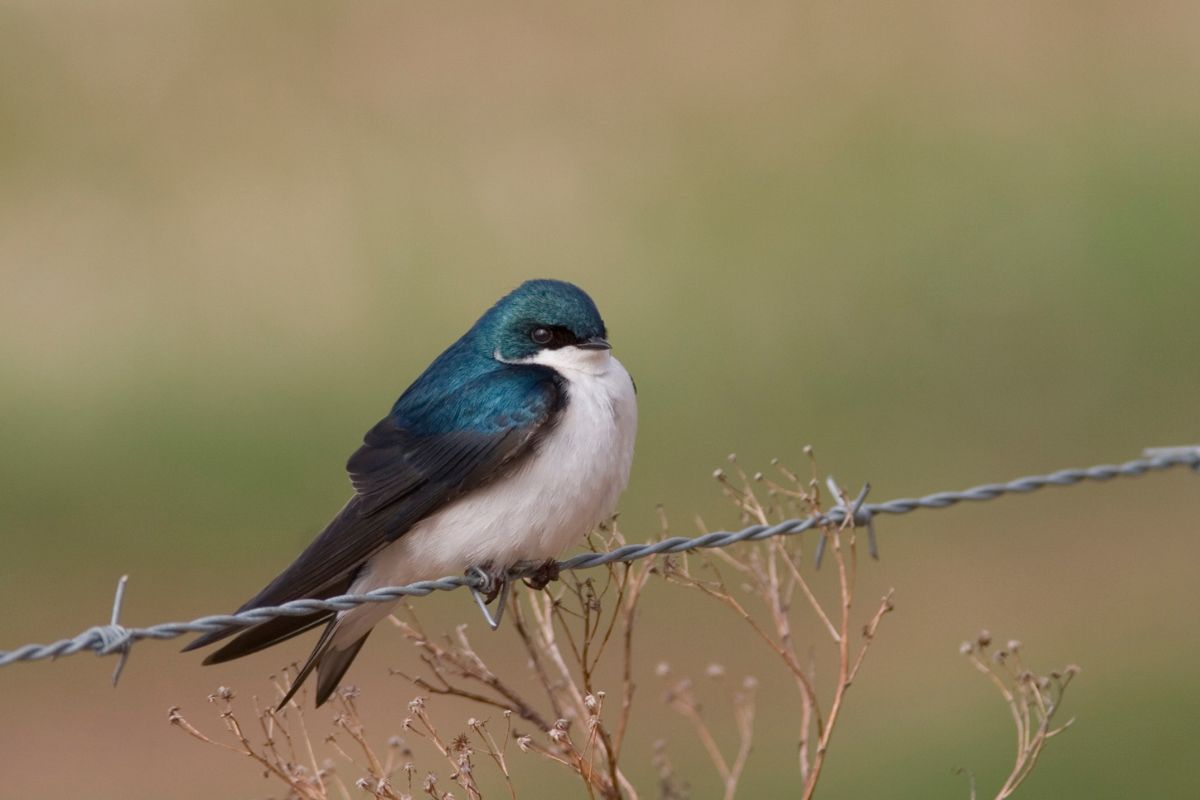
Equipped with blue and white feathers and a tiny bill, the tree swallow is another bird similar to the bluebird. This is another bird that has females with dull colors while the males stand out significantly. Like some other birds on this list, the tree swallow enjoys a habitat around a body of water, like a lake or a river.
Those who cannot find this type of water will seek out open fields. Both of these locations make it easy to locate a steady food source since they are omnivores. These birds are smaller than a bluebird in most cases but can be mistaken for a bluebird during the breeding season.
Once these birds have finished their breeding season, it is important to note they spend time gathered in groups of thousands so that they can safely migrate and continue on.
16. Blue Heron
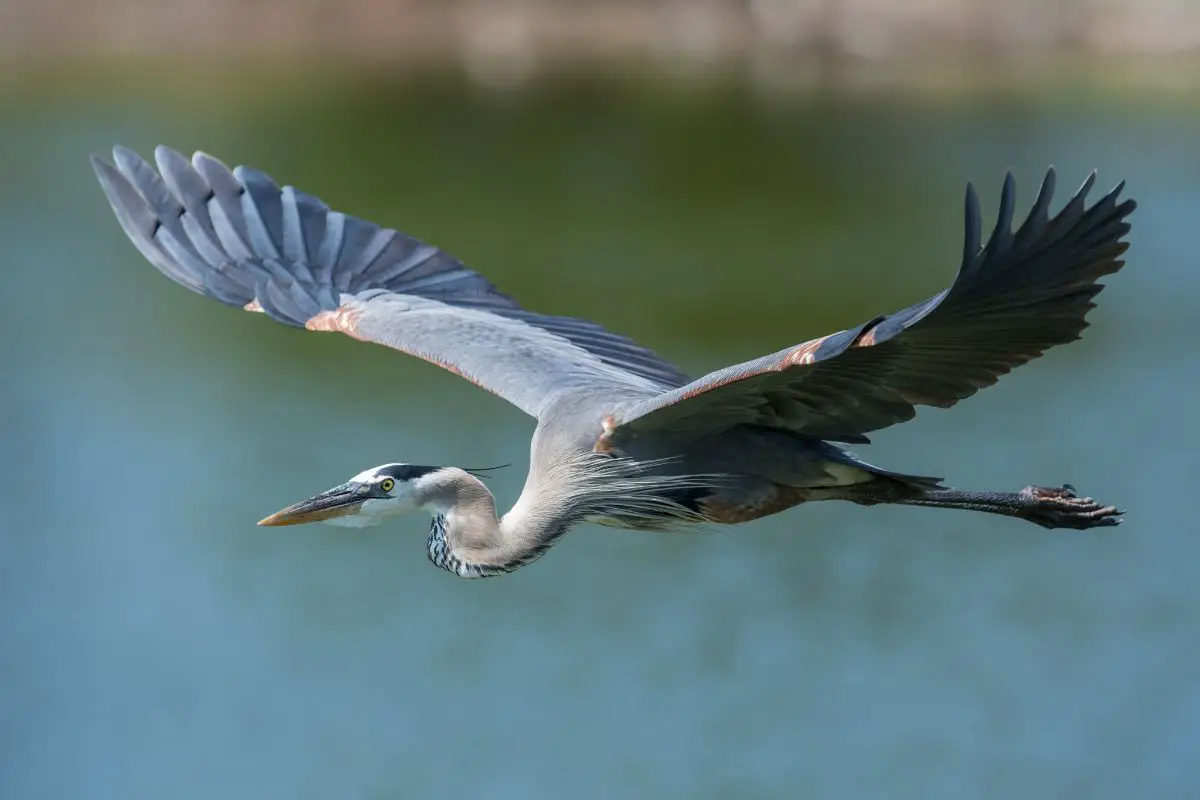
While it is flying in the sky, the blue heron is another blue bird that is found in the same environment as the bluebird. The blue heron is significantly larger, and spends its time in ditches, ponds, and other water sources, looking for small incests and animals to graze on. Once they have matured, the blue heron is a gray and blue color and wades in the wetlands.
You will not be getting these birds mixed up when you look at them, but they do have diet similarities, location, and also their color at maturity.
17. Purple Gallinule
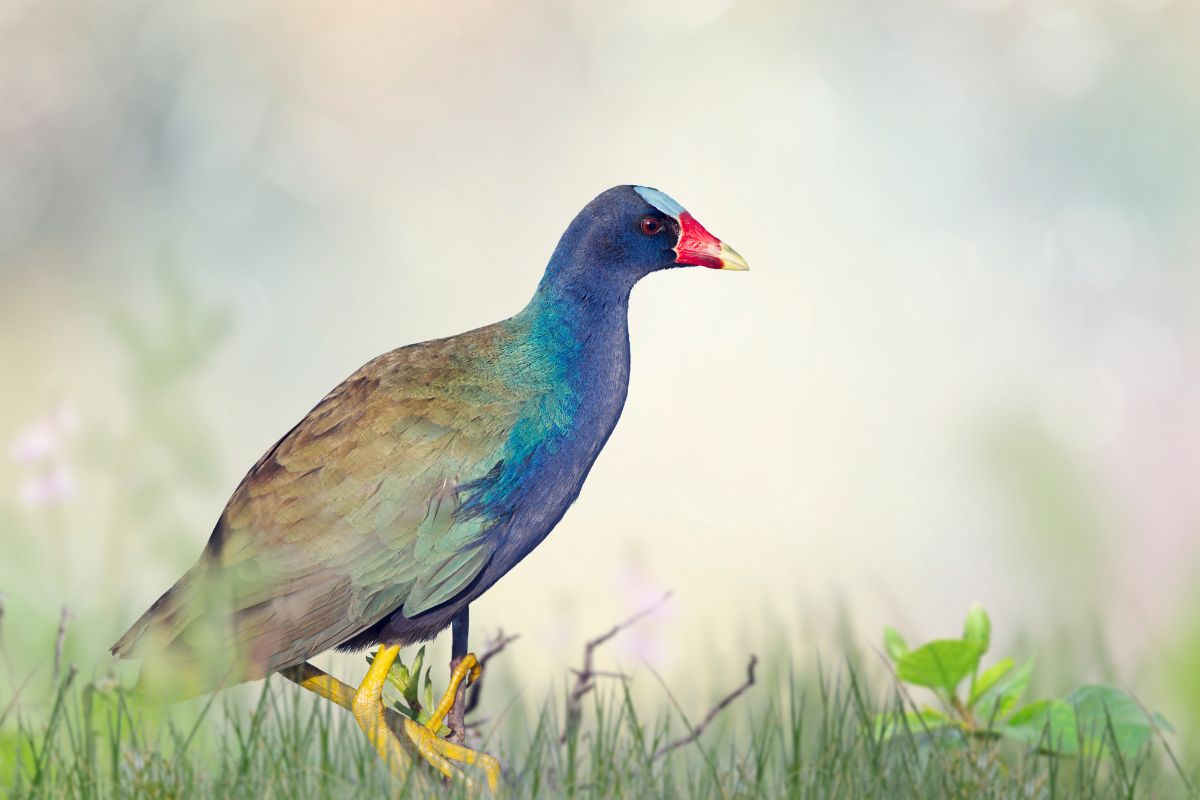
A medium-sized bird, the purple gallinule is much larger than the bluebird. What they do have in common is the bright royal blue color that attracts all eyes around them. They are much more colorful, however, with a red beak and bright yellow legs that are long.
Like the bluebird, the females are also colorful like the males. They enjoy being in freshwater and marsh water around the lower, southeastern part of the country. They are primarily herbivores, which is different from the bluebird.
While the bluebirds carry a tune in their song, the purple gallinule has more of a call that is a steady sound, identifying them.
FAQs About Bluebirds and Those That Are Similar.
Is a lifespan of six to ten years common for most birds?
In many cases, the bluebird or one of the others on this list can make it a minimum of four years, and most of these birds share the same lifespan. An average of six years for a bird is not uncommon and pretty realistic, even in the wild.
What allows bluebirds and other birds to choose between insects and seeds?
The answer to this one is pretty easy. Depending on the type of beak each bird has, it is designed to eat the food that they prefer. For example, some beaks are meant to capture crawling insects and other prey for those who are omnivores.
Other beaks are meant to puncture berries and chew on the twigs that are found nearby.
Are there multiple types of bluebirds?
When you discuss the bluebird, keep in mind there is the eastern bluebird, the mountain bluebird, and the western bluebird. While they are all the same species, each bird has slight differences that alow them to adapt to their surroundings. In each of these areas, the bluebird will encounter new completion, prey, and those who are confused about what they are.



